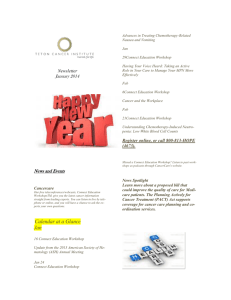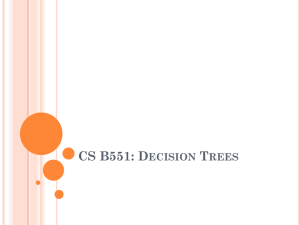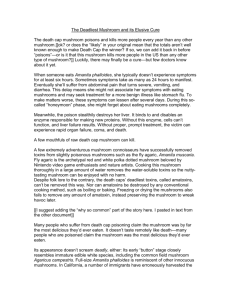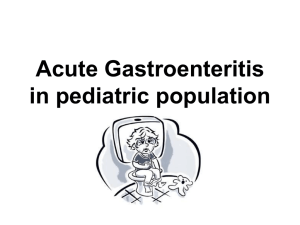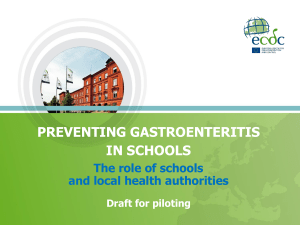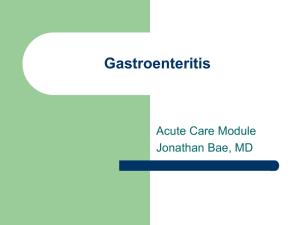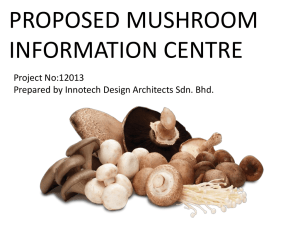Mushroom toxicity
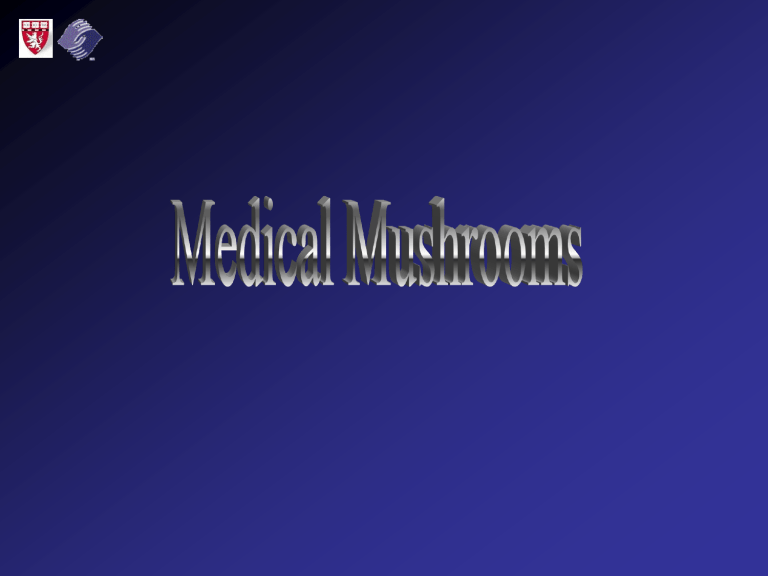
Acute Gastroenteritis
Most common manifestation of toxic mushroom ingestion
Onset of abdominal cramping, diarrhea, and vomiting within 2 hours of ingestion
Self-limited, usually resolving in 12 hours
(although wide variability in responses exist)
Treatment is supportive with po or iv rehydration
Early Gastroenteritis
Even the common supermarket mushroom can induce an acute gastroenteritis in susceptible individuals
Agaricus bisporus
(supermarket mushroom)
Early Gastroenteritis
Common mushroom found in eastern and southern North America
(especially in lawns)
Chloropyllum molybdites
(Green-spored parasol)
Early Gastroenteritis
Luminescent, orangeyellow mushroom found in clusters at base or stumps of deciduous trees
Omphalotus olearius
(Jack-o-Lantern Mushroom)
Delayed Gastroenteritis
Amanita phalloides
(Death cap mushroom)
Accounts for 95% of deaths due to mushroom ingestion
White, smooth cap, with white gills, not attached to the stalk. Stalk is white, cottony to somewhat pearly, sometimes with a bulbous base.
White, large, flaring annulus (ring) is located at the top of the stalk; and cup-like sheath (volva) is found at the base of the stalk. The spores are white.
Heat stable amatoxin binds to RNA polymerase II in hepatocytes and induces liver necrosis
Delayed Gastroenteritis
Amanita phalloides
(Death cap mushroom)
3 stages of poisoning
Acute gastroenteritis with profuse, cholera-like diarrhea, starting 5-12 hours after ingestion
Latent period lasting 2-3 days with ongoing liver damage but symptomatic improvement
Clnically apparent hepatic and renal failure
Treatment
For recent ingestion, gastric lavage (< 1 hour) or activated charcoal (< 24 hours)
Volume resuscitation, repletion of electrolytes and glucose
High dose PCN
Silibinin (milk thistle extract)
Charcoal hemoperfusion
Transplant
Delayed Gastroenteritis
Gyromitra esculenta
(false morel)
Gyromitrin toxin is converted to monomethylhydrazine, a form of rocket fuel, that has CNS, liver, and renal toxicities
Clinical presentation
Onset of abdominal pain, vomiting, diarrhea at 6-10 hours after ingestion
Closely followed by CNS syptoms of weakness, dizziness, headache, confusion, and possibly seizures
May resolve or progress to liver and renal failure
Hemolysis and methemoglobinemia are reported
Treatment
Gastric lavage or charcoal if recent ingestion
Aggressive rehydration
High dose pyridoxine for CNS toxicity
Methylene blue for methemoglobinemia
CNS Syndromes
Psilocybin inhibits serotonin activity
Clinical presentation
Acute onset (15-30 minutes of ingestion) of symptoms ranging from mild euphoria to frank hallucinosis
Treatment is primarily supportive
Psylocybe family



